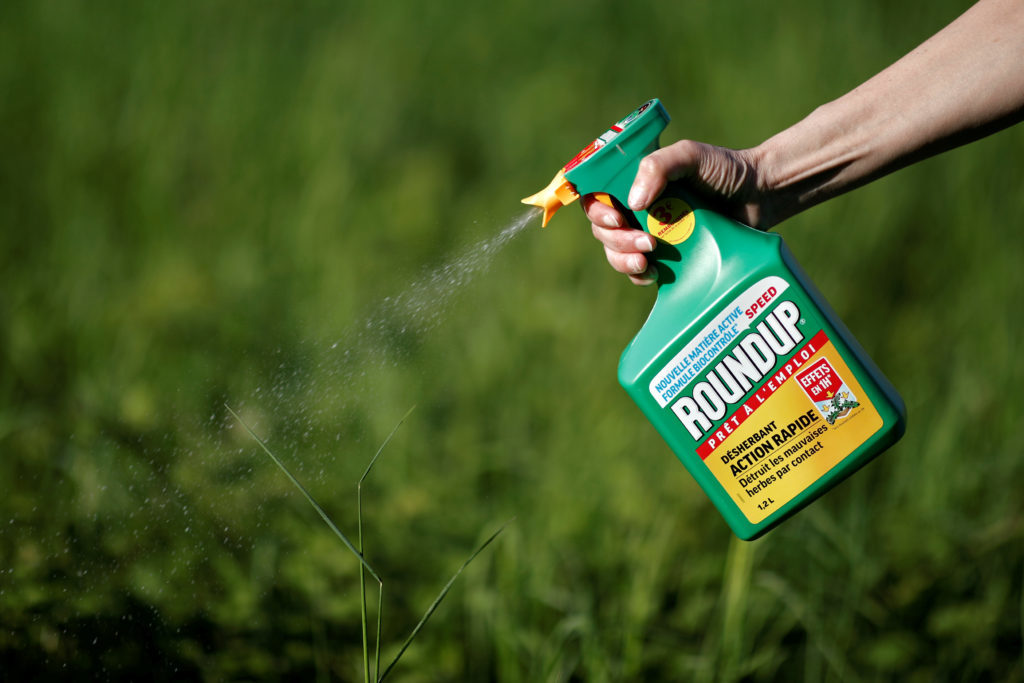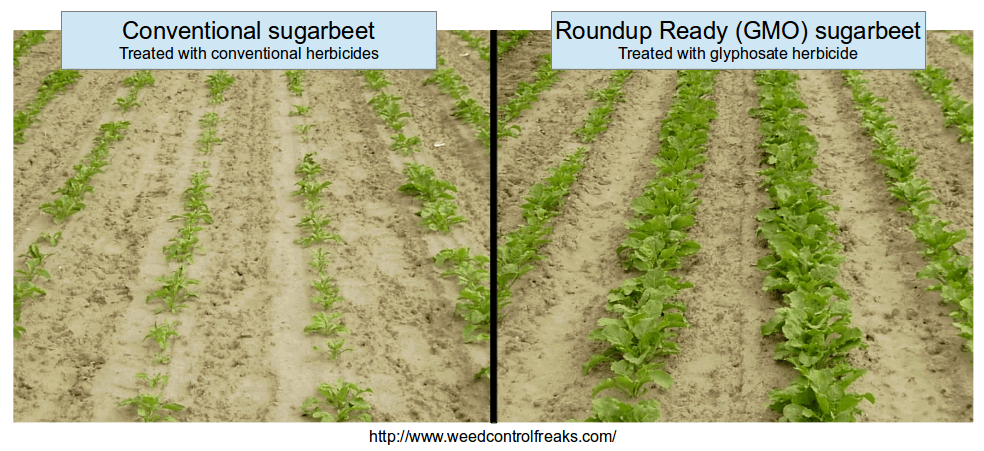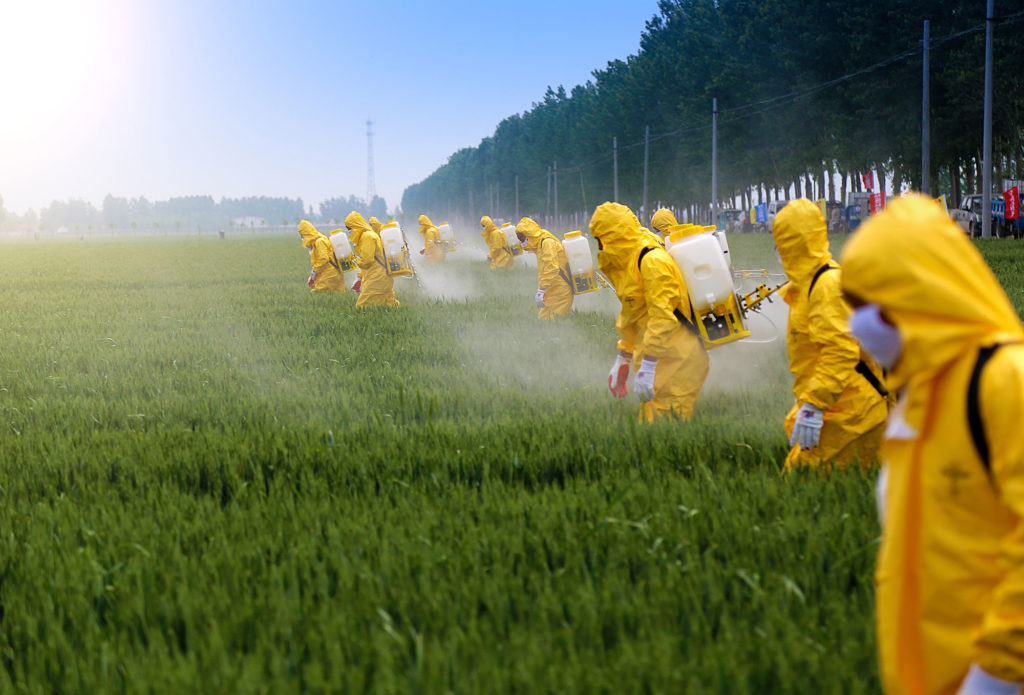Part 1 – What We Know
About a year ago, I was out in my garden pulling weeds, like I normally do: daily, unendingly, like a good Viking or Samurai (knowing it’s not a battle I will ever win, but that the value is in fighting anyway).
Meanwhile, my neighbor was out in his driveway, spraying something into a crack where tiny hints of green life were emerging. We don’t know each other very well, but usually exchange pleasantries when we’re both out in our yards. The following exchange tested my limits of polite conversation.
He called over to me and suggested that I just use Roundup like he did, instead of spending all of my time weeding. I honestly thought he was joking at first. Once I realized he was not, it took effort for me not to visibly recoil. I calmly explained that my garden is organic, and I don’t put chemical fertilizers, pesticides, or herbicides on it. I can’t quite remember his response, which was along the lines of organic methods being expensive, time consuming, or ineffective, but I do remember mine: going straight to my computer and writing a heated Facebook post (with references, of course) about Roundup.
As I spent all day Saturday and Sunday last weekend pulling weeds, I remembered that conversation and thought it was high time to expand my 200-word Facebook post into a blog post (or rather, a series of them.)

Image credit: [1]
Glyphosate Overview
First, we’ll start off with a little bit of background from Wikipedia (no, I’m not above checking Wiki for a good overview before diving into details from primary sources.) All of the information in this section of the post is from the Wikipedia article[2] unless otherwise noted.
Glyphosate, the active chemical in Roundup was developed by Monsanto as a systemic herbicide and crop desiccant, and it came onto the market in 1974. It was designed to be effective by killing broadleaf weeds and grasses that compete with crops. The way it works is by being absorbed mostly through the leaves of the plant, rather than the roots. Because of this feature, it must be applied to existing weeds, rather than to the soil as a preventative measure, meaning that it is often applied to the crops it is meant to protect, as well as the weeds that are fighting the crops for space and nutrients.
Generally herbicides applied to crops would mean bad things for the crops, and that’s where Monsanto’s scientists came in again, specifically in the development of “Roundup Ready” crops, which were modified to be resistant to the effects of glyphosate. Now, the evaluation of genetically modified crops is a conversation for another time, but it is without a doubt that the quick introduction of them on the market caused massive backlash on the internet. Many people raised concerns about the effects of GMO foods, specifically the Roundup Ready crops, such as soybeans, corn, and cotton, and any health risks tied to the use of Roundup.[3] Meanwhile, glyphosate-resistant weeds are becoming more prevalent.
The major health concern tied to glyphosate is cancer, specifically non-Hodgkin’s lymphoma, a type of blood cancer. Glyphosate has been described as the most widely-studied herbicide on the market, with more than 800 separate studies to date.[4] While there are two opposing and fully-entrenched camps on either side of the issue, there is still an ongoing, heavy debate about whether or not there is any demonstrable connection.
Studies on the subject have gone both ways. In 2015, the World Health Organization (WHO) classified it as “probably carcinogenic in humans” while the European Food Safety Authority concluded that it was “unlikely to be genotoxic (damaging to DNA) or to pose a carcinogenic threat to humans,” noting that this statement was related to glyphosate in isolation, not in compounds with other chemicals. Meanwhile, a 2016 study showed no connection between glyphosate exposure and risk of non-Hodgkin lymphoma and multiple myeloma, but the Natural Resources Defense Council (NRDC) criticized that study because it was funded by Monsanto.

Image credit: [5]
When I started exploring this topic last summer, research into the effects of glyphosate in isolation had – in general – indicated that occupational exposure might result in a weak connection, but that home use / domestic gardening would not result in enough contact with the chemical to pose a risk. Additionally – in general – other studies on glyphosate alone concluded that there was “no convincing evidence” of interaction with endocrine pathways (specifically mentioned were estrogen, androgen, and thyroid).
Even back in 2009, Scientific American pointed out that while little was being done to demonstrate harmful side effects of glyphosate in isolation, living organisms do not encounter it in isolation, but rather in a formulation with other chemicals, and that is how it should be studied.[6]
The chemical of interest used in Roundup includes polyethoxylated tallow amine (POEA), which is a surfactant added to the formulation as a wetting agent. It breaks down the surface tension of water and the waxy protective coating on the plant’s leaves, allowing the herbicide to be absorbed more easily. It is not allowed in aquatic formulations because of toxicity to fish and amphibians.
As far as studies of glyphosate effects in formulation, there has been evidence of skin irritation on contact, oral/nasal discomfort if inhaled, conjunctivitis/corneal injury on contact with eyes if not flushed out quickly, and gastrointestinal erosion or death if ingested in large quantities. Some studies show a connection with DNA damage; some do not.

Image credit: [7]
The Corporate Stance
A lot has happened on this front since my Facebook post last summer, including the formal acquisition of Monsanto by Bayer, and I spent the better part of a day just getting caught up. But first, here’s what Bayer has to say:[8]
- On Safety: Glyphosate is “subject to rigorous testing and oversight by regulatory authorities.” Over 800 studies confirm that glyphosate and glyphosate-based formulations “can be used safely and are not carcinogenic.” Regulatory authorities “consistently support the safety of glyphosate and glyphosate-based herbicides when used as directed.”
- On the Environment: “Glyphosate is actually an important tool for helping farmers preserve the environment and biodiversity.” Farming without tilling reduces CO2 emissions and erosion. “Protecting crops from weeds helps to preserve land so it can be used for forage and a natural habitat for wildlife.”
- On Bees: No large-scale studies have demonstrated a connection between glyphosate and beehive collapse. Bayer understands how crucial bees are to agriculture and works “to understand the challenges affecting bee health to promote solutions for farmers and beekeepers to help pollinators thrive.”
- On Monarch Butterflies: “Declines in monarch butterflies have been associated with a number of factors including logging of overwintering sites in Mexico, weather events, predation, pathogens, parasites, and reduced availability of host plants and nectar sources.” Bayer is working with “the monarch conservation community, farmers, agriculture companies, researchers, educators, government agencies, cities, youth and others to improve and protect monarch habitat across the United States.”
- On Cancer: “The National Institutes of Health (NIH) and the Joint FAO/WHO Meeting on Pesticide Residues (JMPR) both recently reaffirmed glyphosate is not carcinogenic.” “Health Canada further supported this by saying, ‘No pesticide regulatory authority in the world currently considers glyphosate to be a cancer risk to humans at the levels at which humans are currently exposed.’”
- On Food: “When it comes to residues, regulatory authorities have strict rules. In fact, the US EPA and EFSA set daily exposure limits at least 100 times below levels shown to have no negative effect in safety studies. The levels sometimes found in food are incredibly small and nowhere near a level of concern.”
Coming up in the next installment, you’ll get detail on the scientific and legal battles that are raging around this topic.
In the meantime, what do you think of Roundup? Is it safe, or is there a corporate cover-up?
Let me know in the comments below.
Thanks for reading!
[1] https://www.pbs.org/newshour/health/what-you-need-to-know-about-a-popular-weed-killers-alleged-link-to-cancer
[2] https://en.wikipedia.org/wiki/Glyphosate
[3] https://www.npr.org/sections/thesalt/2019/05/30/727914874/safe-or-scary-the-shifting-reputation-of-glyphosate-aka-roundup
[4] https://www.bayer.com/en/is-glyphosate-safe.aspx
[5] https://geneticliteracyproject.org/2016/11/08/gmo-sugar-beets-offer-30-yield-boost-mandatory-labels-devastate-farmers/
[6] https://www.scientificamerican.com/article/weed-whacking-herbicide-p/
[7] https://www.agdaily.com/crops/farm-babe-glyphosate-on-wheat/
[8] https://www.bayer.com/en/is-glyphosate-safe.aspx
1 Comment
Drinking the Garden – Radical Moderate · May 30, 2021 at 10:00 am
[…] [1] https://radicalmoderate.online/roundup-and-glyphosate-part-1/ […]